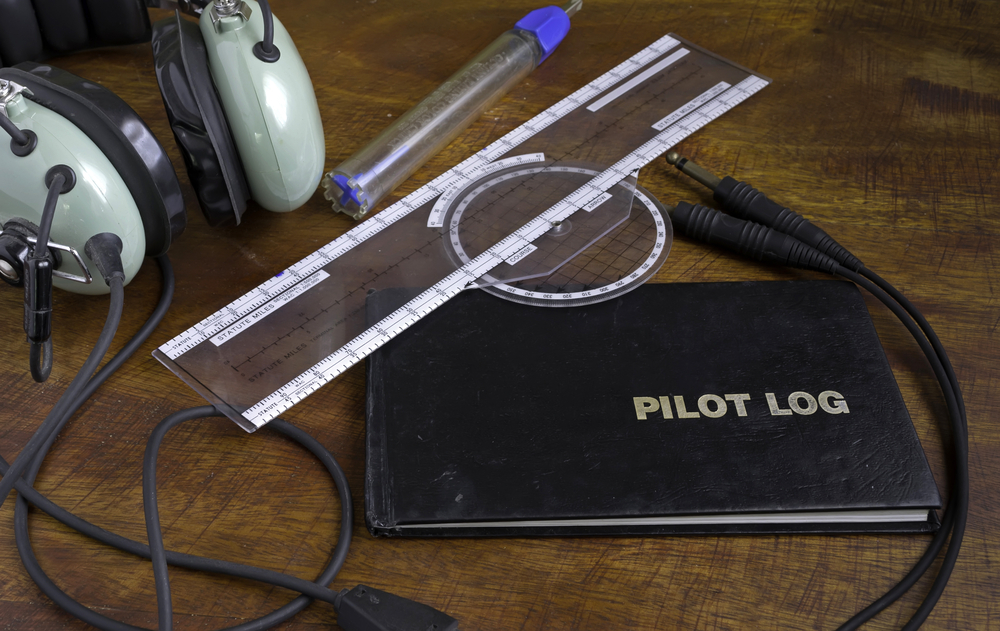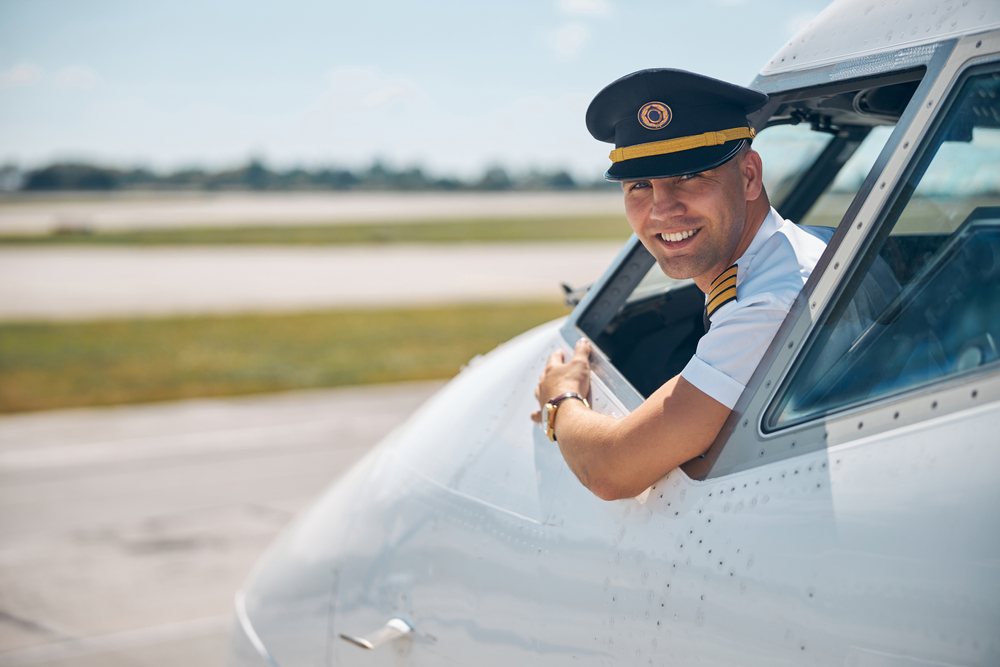Have you ever found yourself wondering how to craft a standout pilot resume? A great resume can be the key to landing your dream job or being passed over! This article will guide you in writing an effective pilot resume. It will help you present yourself as a top candidate to potential employees. You will find practical tips, examples, and best practices throughout the guide. These resources will help you create an impactful pilot resume!
Table of Contents
What are the essential components of a pilot resume?
Have you ever wondered how a pilot CV stands out from a regular CV? A regular CV usually covers general skills, education, and work experience for various jobs. A successful pilot resume or pilot CV is structured to showcase your aviation experience and regulatory know-how. Essential qualifications like pilot licenses and medical certifications take center stage.
Here are the key sections you should include in a pilot resume:
Contact information
Start with your full name, phone number, email address, and LinkedIn profile. Ensure this section is easy to find and up-to-date. To enhance your pilot CV, use a professional email address and ensure your phone number is correct. Avoid including personal information such as age or marital status!
Objective statement
A brief summary of your career goals and what you aim to bring to the role. This should be tailored to each job application. Write a concise statement that highlights your career goals and what you bring to the role. For instance, “Experienced commercial pilot with over 2,000 hours of flight time, seeking a position with [Airline Name] to leverage extensive training and operational experience.”
Flight experience
List your flight hours, types of aircraft flown, and notable flights or missions. This section is pivotal in a pilot resume. Focus on quantity and quality! Include flight hours, aircraft types, and specific roles. Use bullet points for clarity. For example:
- “1,500 hours as Pilot-in-Command on Cessna 172”
- “300 hours as First Officer on Boeing 737-800”
If you are a low-time pilot seeking employment with a commercial airline, you might be eager to discover the best strategies for building flight hours here.
Certifications
Include all relevant certifications such as EASA/ICAO/FAA licenses, type ratings, and medical certificates. Ensure this section is prominently displayed. List all relevant certifications with dates. Start with the most recent. For example:
- “FAA Airline Transport Pilot License (ATP), 2022”
- “Cessna Citation Type Rating, 2021”
Education
Detail your educational background. Do not forget to include flight schools, degrees, and relevant coursework! Mention your highest degree first and relevant coursework. For instance:
- “Bachelor of Science in Aviation, XYZ University, 2018”
- “Commercial Pilot Certificate, ABC Flight School, 2019”
Skills
Highlight key pilot skills. These may include strong communication skills, decision-making, and technical proficiency. You can use bullet points for easy reading. Here is an example:
- “Proficient in CRM”
- “Strong knowledge of aviation regulations and safety standards”
References
Provide a list of references who can vouch for your qualifications and experience. You may list up to three professional references. Include their name, title, company, and contact information. But do not forget to always ensure that they are aware and willing to provide a reference for you!
Highlighting flight experience and certifications
Curious about how to make your flight experience and certifications truly shine? The key is clarity and precision. Show off your skills with quantifiable metrics! For total flight hours, be specific—like saying “1,200 hours in multi-engine aircraft.” List all the aircraft types you are rated to fly. It is also beneficial to include any special endorsements or qualifications you may have!
You may spotlight your flight experience like that: “Accrued over 1,500 flight hours on the Boeing 737, including 500 hours in challenging weather conditions.” Or feel free to use your own wording!
Crafting a strong objective statement
Your objective statement should be concise and tailored to the position you are applying for. It should reflect your aspirations and highlight your unique qualifications. Crafting a strong objective statement on your pilot CV is like making a memorable first impression at a job interview. It grabs attention and sets you apart from the competition.
For instance, if you are aiming to join a top airline, a clear objective like “Eager to bring 1,500 hours of Boeing 737NG experience to XYZ Airlines” shows you are goal-oriented and know what you want. It also tailors your CV to the job, showing you are genuinely interested and a great fit. A strong objective highlights your unique value and matches what airlines want!
Here is a summary of how to craft a compelling objective:
- Be specific: Mention the position and the company
- Highlight your strengths: Focus on your skills and experience
- Show enthusiasm: Convey your passion for flying
For example:
- “Seasoned commercial pilot with 2,500 flight hours, seeking to join [Airline Name] as a First Officer to utilize my extensive experience in safety management and flight operations.”
- “Aspiring ATP pilot with a strong background in single-engine and multi-engine aircraft, eager to contribute to [Airline name]’s commitment to safety and customer service.”

Why should you include a cover letter with a pilot resume?
Skipping the cover letter on your pilot CV is like showing up to a flight interview without your pilot’s license—it is a missed opportunity to truly stand out. Airlines receive tons of CVs, so a cover letter can be your secret weapon to grab their attention. For example, imagine a situation when you are applying to a prestigious airline. Without a cover letter, you miss out on explaining why your experience with challenging weather conditions makes you a perfect fit for their routes.
A cover letter lets you add a personal touch, show enthusiasm, and highlight how your skills match the airline’s needs. It is where you can share a brief story about how you handled a tricky flight situation. You can also explain why you are passionate about the company’s mission. Airlines look for pilots who not only have the right qualifications but also show genuine interest and fit with their culture.
A well-crafted cover letter complements your resume by adding context and showcasing your personality. Check out how to write an effective pilot cover letter in five simple steps:
- Personalize the greeting: Address the hiring manager by name if possible
- Introduce yourself: Start with a strong opening statement that grabs your attention
- Highlight key qualifications: Mention your most relevant skills and experience
- Express enthusiasm: Convey your passion for flying and the specific role
- Call to action: Invite them to contact you for an interview
For instance: “Dear [Hiring Manager’s name], I am excited to apply for the First Officer position at [Airline name]. With over 1,500 flight hours on the Boeing 737, I am eager to bring my expertise in safety management and customer service to your team. I look forward to the opportunity to discuss how my skills and experiences align with [Airline name]’s goals.”
Design tips for a professional pilot CV
A well-formatted resume is crucial for readability and making a great first impression. Here are some tips to enhance the design of your pilot CV:
- Use clear and clean layouts. Think of your CV as your cockpit dashboard—everything needs to be organized and easy to read. Use clear headings and stick to a professional clean design, so recruiters can quickly see your key accomplishments.
- Choose readable fonts. Use fonts like Arial or Calibri, and keep the font size between 10-12 points.
- Bold key achievements. Make your standout accomplishments pop! Use bold text or a different color to highlight your total flight hours or any special certifications.
- Consistent formatting. Just like flying smoothly, consistency is key. Stick to one font style and size throughout your CV. This consistency makes your document look professional and polished. Imagine flying with a clear flight plan—your CV should have the same clarity.
- Use real numbers. Quantify your experience to make it more impactful. Instead of saying you are experienced with multi-engine aircraft, specify “1,500 hours in multi-engine aircraft.” Numbers make your achievements concrete and impressive, just like logging flight hours.
- Incorporate industry keywords. Sprinkle in those aviation buzzwords! Use terms like “IFR,” “VFR,” and “type rating” to ensure your CV speaks the language of the industry.
- Professional yet personal touch. Inject a bit of your personality into the design. A subtle splash of color or a sleek, modern design can make your CV stand out while remaining professional.
- Keep it concise. Aim for 1-2 pages, focusing on relevant information. Avoid clutter and unnecessary details.
Why does the design of a pilot resume matter? The answer is simple! A polished design reflects professionalism and attention to detail. These are qualities that are crucial in the aviation industry!
Top 5 common mistakes to avoid when writing a pilot resume
Let’s make sure your pilot resume is as smooth as a flight on autopilot! Here are some common mistakes to steer clear of:
1. Clarity and conciseness
Overly wordy descriptions. Are you overloading your resume? Keep it concise! Think of your resume as your flight plan—clear and to the point. Are you using too many words? Trim the fat and let your skills shine with crisp bullet points!
Jargon and acronyms. Sure, we all love the aviation language, but let’s not lose the ground crew. Use jargon sparingly.
2. Formatting – keep it sleek, not crowded
Inconsistent formatting. Are your fonts, sizes, and styles all over the place? Keep it tidy with a clean, professional look.
Lack of white space. Is there enough breathing room? Do not let your resume look like a packed cabin! Make sure there is enough white space. Can your potential employer easily read your achievements? Overcrowded text can be overwhelming.
3. Contact info – make sure they can reach you
Missing information. Ensure your phone number, email address, and location are included. Are they front and center?
Unprofessional email address. Use a professional email address, ideally one that includes your name.
4. Proofreading – no room for typos!
Spelling and grammar mistakes: Carefully proofread your resume. Even minor errors can create a negative impression.
Inconsistent dates. Ensure that employment dates are accurate and consistent. Proofread!
5. Summary and objective
Missing summary statement. Missing a summary? Start with a bang!
Vague objectives: If you include an objective, make it specific to the position you are applying for. What is your career goal, and how does this pilot job fit into it?

Crafting a standout pilot resume might take some time, but think of it as your ticket to the cockpit of your dreams! A well-prepared resume is not just paperwork; it is your opportunity to soar! So, put on your aviator shades, polish your CV, and get ready to impress.
Good luck and happy flying!

